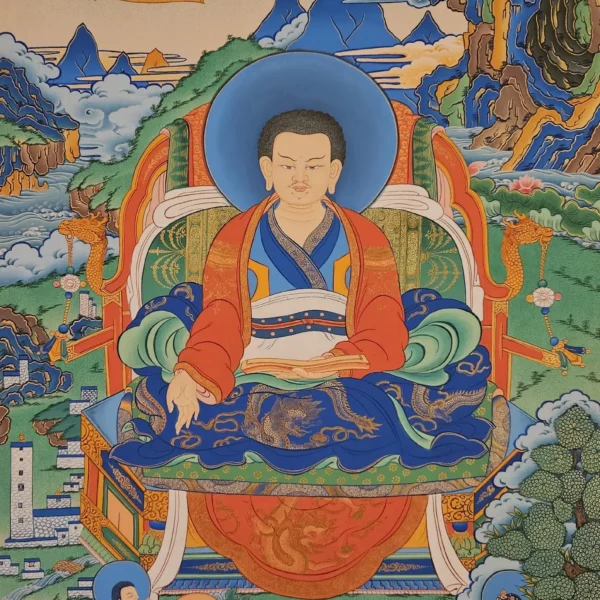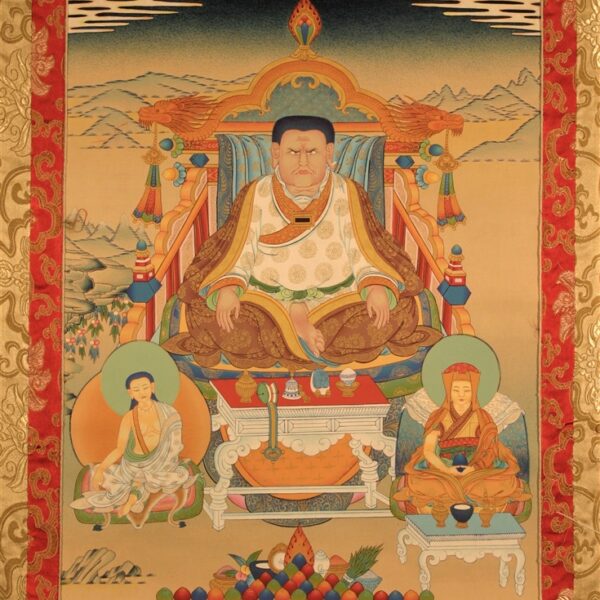Marpa stands as a central figure in the history of Tibetan Buddhism, playing a pivotal role in the transmission of Buddhist teachings from India to Tibet.
History
Born in the 11th century in Tibet, Marpa lived during a time of profound cultural and spiritual transformation. The introduction of Buddhism to Tibet had already begun centuries earlier, but Marpa’s generation marked a decisive moment in the development of Tibetan Buddhist practice. His dedication as both scholar and practitioner made him a pivotal figure in ensuring the preservation and accurate transmission of Buddhist teachings.
Marpa’s journey was anything but easy. He was trained by the greatest Indian masters of his time, including Naropa, Tilopa, and Maitripa. His formal training spanned several years, with Marpa making multiple perilous trips to India, where he studied under these esteemed teachers. His first journey to India (1042–1057) was particularly transformative, marked by intense study and spiritual challenges. Marpa not only mastered the intricate and profound aspects of tantric Buddhism but also took on the monumental task of translating key Sanskrit texts into Tibetan. His role as a translator has earned him the title of “Marpa the Translator,” solidifying his place as one of the most important figures in Tibetan Buddhist history. Through his translations, he brought to Tibet a wealth of Buddhist wisdom, enabling future generations of Tibetans to engage deeply with Indian Buddhist thought.



